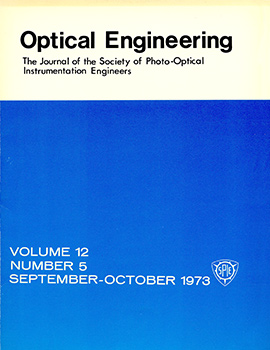Leon Goldman, R. Rockwell, Jr., Stanley Fox, James Fidler
Optical Engineering, Vol. 12, Issue 5, 125176, (October 1973) https://doi.org/10.1117/12.7971657
TOPICS: Optical engineering, Laser therapeutics, Carbon dioxide lasers, Laser vision correction, Argon ion lasers, Laser development, Continuous wave operation, Carbon dioxide, Argon, Microscopes
At the Laser Laboratory of the Medical Center of the University of Cincinnati for more than 11 years detailed studies have been done with laser surgery in animals and in clinical investigative studies in a large series of patients. It is evident that the optical engineering phase of current laser surgical instrumentation requires considerably more research and development. Reliable high-output lasers, preferably CW, Md-YAG, CO2 are argon are required. Optical engineering requirements include flexibility and efficiency of beam transmission through small, sterilizable precise operating probes capable of incision, coagulation or fulguration. Probes must be adaptable for use with operating microscopes and for laser surgery in body cavities.



 Receive Email Alerts
Receive Email Alerts